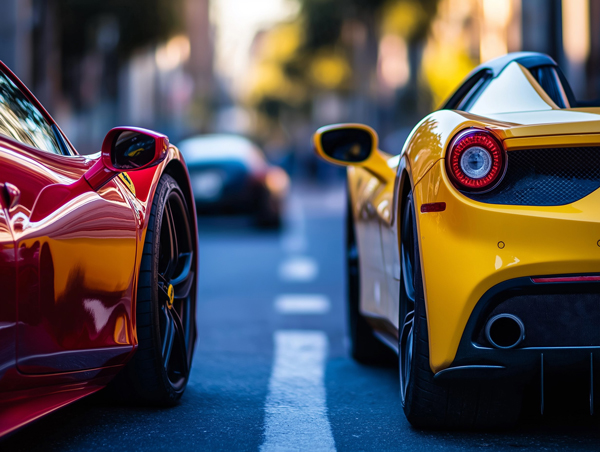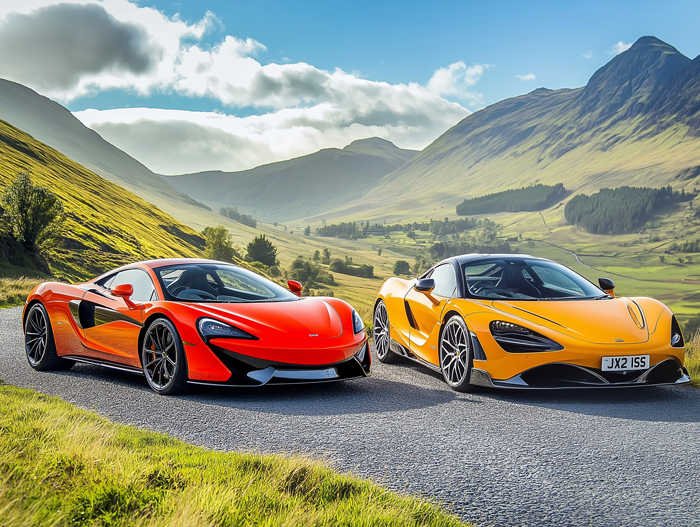Introduction
The world of high-performance automobiles is dominated by two elite categories: supercars and hypercars. While both represent the pinnacle of speed, engineering, and design, they are not the same. The distinction between supercars and hypercars has become more pronounced in recent years, with hypercars pushing the boundaries of what’s technologically possible.
But what exactly separates a supercar from a hypercar? Is it just about speed, price, or exclusivity? In this article, we’ll break down the key differences between these two categories, explore examples of each, and explain why hypercars sit at the absolute top of the automotive food chain.
What is a Supercar?
A supercar is a high-performance sports car that offers extreme speed, handling, and design compared to regular production vehicles. While they are exotic and incredibly fast, they are still somewhat attainable compared to hypercars.
Key Features of a Supercar:
•High Performance – Supercars typically have 500-800 horsepower and can accelerate from 0-60 mph in under 3.5 seconds.
•Exotic Design – Sleek aerodynamics, aggressive styling, and lightweight materials.
•Track-Ready Handling – Advanced suspension, aerodynamics, and braking systems.
•Relatively Mass-Produced – While rare, many supercars have production numbers in the thousands, making them more accessible than hypercars.
•Price Range – Supercars typically cost $200,000 to $500,000.
Examples of Supercars:
1.Ferrari F8 Tributo – A twin-turbo V8-powered supercar with 710 horsepower.
2.Lamborghini Huracán STO – A high-performance version of the Huracán designed for track use.
3.McLaren 720S – A carbon-fiber supercar known for its lightweight design and power.
4.Porsche 911 Turbo S – A supercar that blends extreme performance with daily drivability.
5.Aston Martin Vantage V12 – A grand tourer with the performance of a supercar.
Supercars are exceptionally fast and luxurious, but they are still designed to be street-legal and, in some cases, practical enough for occasional daily driving.
What is a Hypercar?
A hypercar is an ultra-exclusive, extremely powerful car that represents the absolute cutting edge of performance and technology. Hypercars push beyond the limits of supercars, offering performance figures that seem almost unbelievable.
Key Features of a Hypercar:
•Extreme Power – Hypercars typically exceed 1,000 horsepower and can accelerate from 0-60 mph in under 2.5 seconds.
•Advanced Technology – Features like hybrid powertrains, active aerodynamics, and Formula 1-inspired engineering.
•Limited Production – Most hypercars are produced in extremely limited numbers (sometimes under 100 units worldwide).
•Record-Breaking Speed – Many hypercars can exceed 250 mph and compete for the title of the fastest production car.
•Ultra-Expensive – The price of hypercars starts at $1 million and can exceed $5 million.
Examples of Hypercars:
1.Bugatti Chiron Super Sport 300+ – Capable of 304 mph, one of the fastest hypercars ever built.
2.Koenigsegg Jesko Absolut – Designed for top speed runs, expected to break the 330 mph barrier.
3.Rimac Nevera – A fully electric hypercar with 1,914 horsepower.
4.Lamborghini Revuelto – A hybrid hypercar with a V12 engine producing over 1,000 horsepower.
5.McLaren Speedtail – A hyper-GT with a futuristic design and a top speed of 250 mph.
Supercar vs. Hypercar: The Key Differences
FeatureSupercar Hypercar
Performance 500-800 HP, 0-60 mph in 3-3.5 sec 1,000+ HP, 0-60 mph in under 2.5 sec
Speed 190-220 mph 250+ mph
Technology High-performance, but traditional Cutting-edge, hybrid/electric, active aero
Production Thousands of units Limited to hundreds or fewer
Price $200,000-$500,000 $1 million+
Exclusivity Expensive but somewhat accessible Ultra-exclusive, often invite-only
Performance & Speed
Supercars are fast, but hypercars take speed to an entirely different level. Hypercars often have over 1,000 horsepower, while even the most extreme supercars max out at around 800 horsepower.
Technology & Engineering
Hypercars lead the way in automotive innovation. Many use hybrid or fully electric powertrains, active aerodynamics, and cutting-edge materials like carbon fiber monocoques. Supercars, while technologically advanced, don’t always have the same level of engineering complexity.
Exclusivity & Price
Supercars are still luxurious and rare, but they are mass-produced compared to hypercars. Hypercars are hand-built in extremely low numbers, and many are sold by invitation only.
Can a Car Be Both?
Some cars exist on the borderline between a supercar and a hypercar. For example:
•The McLaren P1, Ferrari LaFerrari, and Porsche 918 Spyder were once considered hypercars, but as newer hypercars emerged, they are now often categorized as hybrid supercars.
•The Bugatti Veyron was the world’s first car to break the 1,000 horsepower mark, setting the standard for hypercars.
•The Aston Martin Valkyrie and Mercedes-AMG One push boundaries with F1-inspired technology, making them closer to hypercars than traditional supercars.
The Future of Supercars and Hypercars
With advancements in electric vehicles (EVs), aerodynamics, and AI-driven driving systems, the line between supercars and hypercars is continuing to blur.
•Electric Hypercars: Brands like Rimac and Lotus are proving that EV hypercars can outperform traditional gasoline-powered ones.
•More Affordable Supercars: As technology improves, some supercar features are trickling down into high-performance cars that are more affordable.
•New Hypercars from Unexpected Brands: Companies like Tesla, Hyundai, and even Apple are rumored to be working on extreme performance EVs.
Conclusion
While supercars and hypercars share similarities, the difference lies in performance, technology, exclusivity, and price. Supercars are incredibly fast and luxurious, while hypercars push the boundaries of automotive engineering to near-impossible levels.
For enthusiasts looking for a powerful, exotic, and thrilling driving experience, a supercar is more accessible and practical. But for those seeking the absolute best, cutting-edge, and ultra-exclusive vehicles, hypercars remain the ultimate dream machines.
No matter which category excites you, both supercars and hypercars represent the pinnacle of automotive passion and engineering—ensuring that the love for speed and performance will continue for generations to come.





